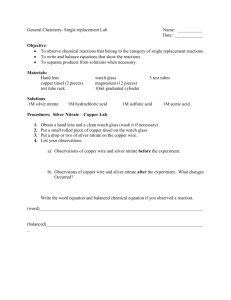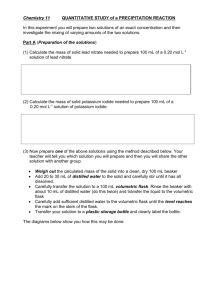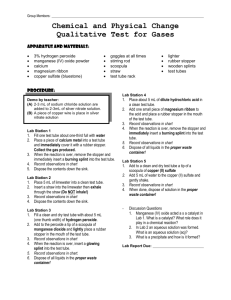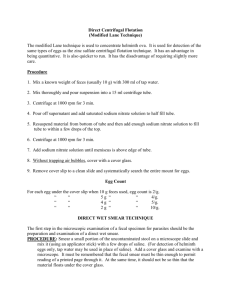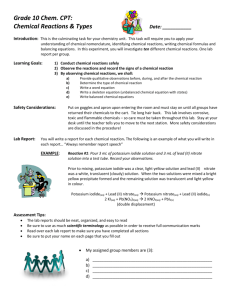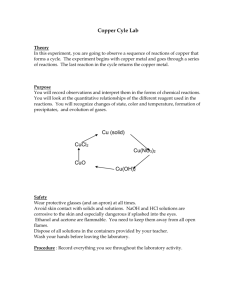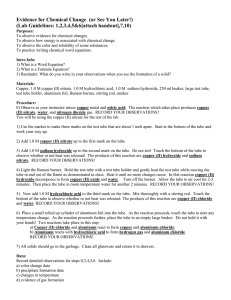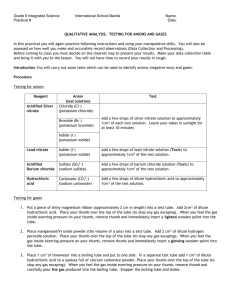Differentiating five general types of Chemical Reactions
advertisement
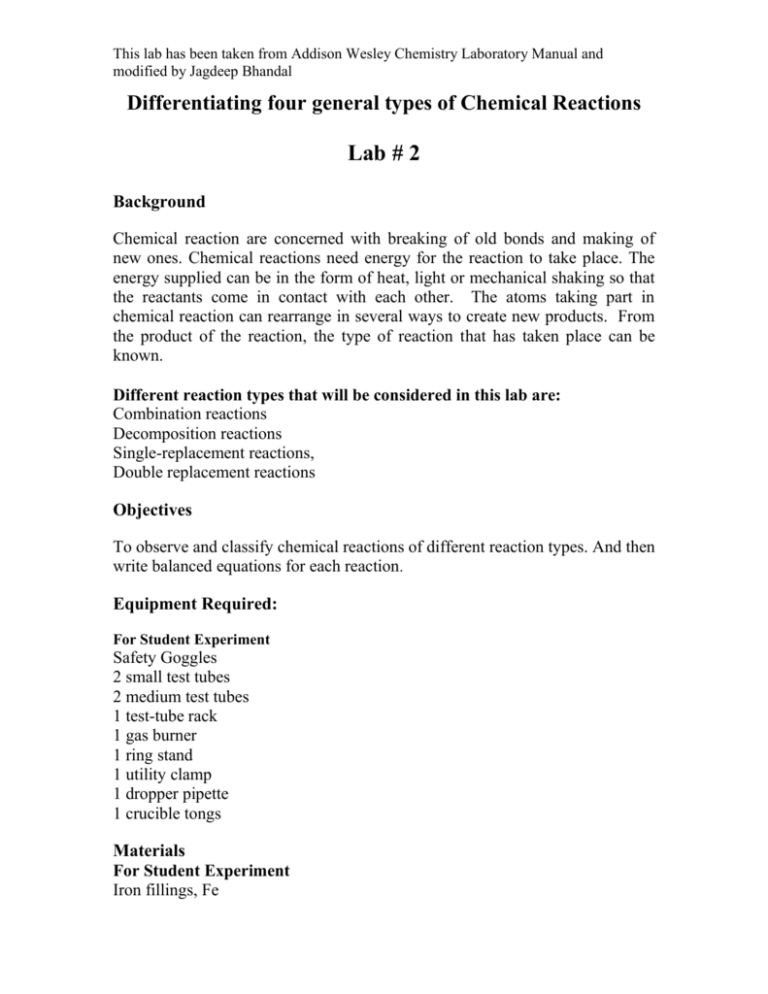
This lab has been taken from Addison Wesley Chemistry Laboratory Manual and modified by Jagdeep Bhandal Differentiating four general types of Chemical Reactions Lab # 2 Background Chemical reaction are concerned with breaking of old bonds and making of new ones. Chemical reactions need energy for the reaction to take place. The energy supplied can be in the form of heat, light or mechanical shaking so that the reactants come in contact with each other. The atoms taking part in chemical reaction can rearrange in several ways to create new products. From the product of the reaction, the type of reaction that has taken place can be known. Different reaction types that will be considered in this lab are: Combination reactions Decomposition reactions Single-replacement reactions, Double replacement reactions Objectives To observe and classify chemical reactions of different reaction types. And then write balanced equations for each reaction. Equipment Required: For Student Experiment Safety Goggles 2 small test tubes 2 medium test tubes 1 test-tube rack 1 gas burner 1 ring stand 1 utility clamp 1 dropper pipette 1 crucible tongs Materials For Student Experiment Iron fillings, Fe This lab has been taken from Addison Wesley Chemistry Laboratory Manual and modified by Jagdeep Bhandal 0.1 M copper(II) sulphate, CuSO4 0.1 M lead(II) nitrate, Pb(NO3)2 0.1 M potassium iodide, KI 3% hydrogen peroxide, H2O2 Wood splints matches Safety Requirements All safety procedures form California Laboratory safety handbook should be followed. All experiments should be done under the supervision of the Chemistry teacher. Always wear safety goggles when working in the lab. Lead and copper compounds are toxic. Use as little of these compounds as practical. Procedure As you perform the experiment, record your observations in table below. 1. Iron metal and copper(II) sulfate solution: Half-fill a small test tube with copper(II) sulfate solution. Add about 2 g of iron fillings to the solution. After 5 minutes record your observations. 2. Lead(II) nitrate and potassium iodide solutions- Put 2mL of lead(II) nitrate solution in to a small test tube. Add 5-10 drops of potassium iodide solution. Record your observations. 3. Action of heat on hydrogen peroxide- Add 2mL of the 3% hydgrogen peroxide solution to a medium-sized test tube. Clamp the test tube to a ring stand. Caution- Make sure the mouth of the tube is pointed away from you and from everyone else. Very Gently heat the solution. Identify any gas that forms by using crucible tongs to insert a glowing wood splint into the mouth of the test tube. Record your observations. This lab has been taken from Addison Wesley Chemistry Laboratory Manual and modified by Jagdeep Bhandal Observations: Reaction Observations Reaction Type Fe and CuSO4 Pb(NO3)2 and KI H2O2 and Heat Data Analysis 1. Classify each of the observed reactions as one of the five reaction types Combination reactions, Decomposition reactions, Single-replacement reactions, Double replacement reactions. 2. Write an equation for each reaction observed. Indicate the state (s, l, g, aq) for each reactant and product, then balance each equation. Conclusions Describe in your own words the five types of chemical reactions listed in the Background section. Explain how you will distinguish each of these types of reactions.
